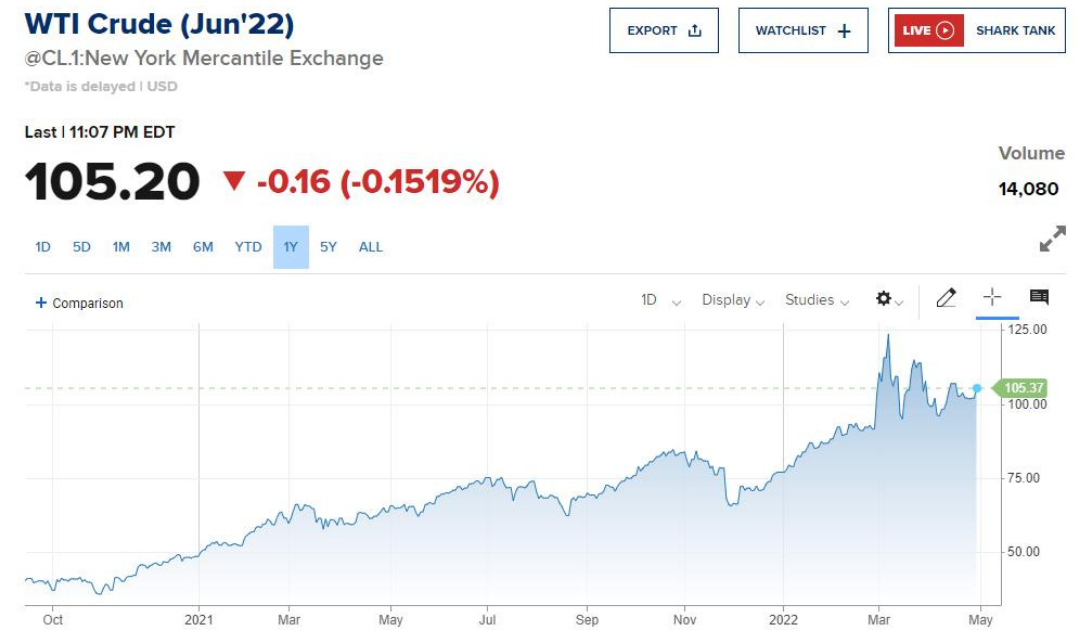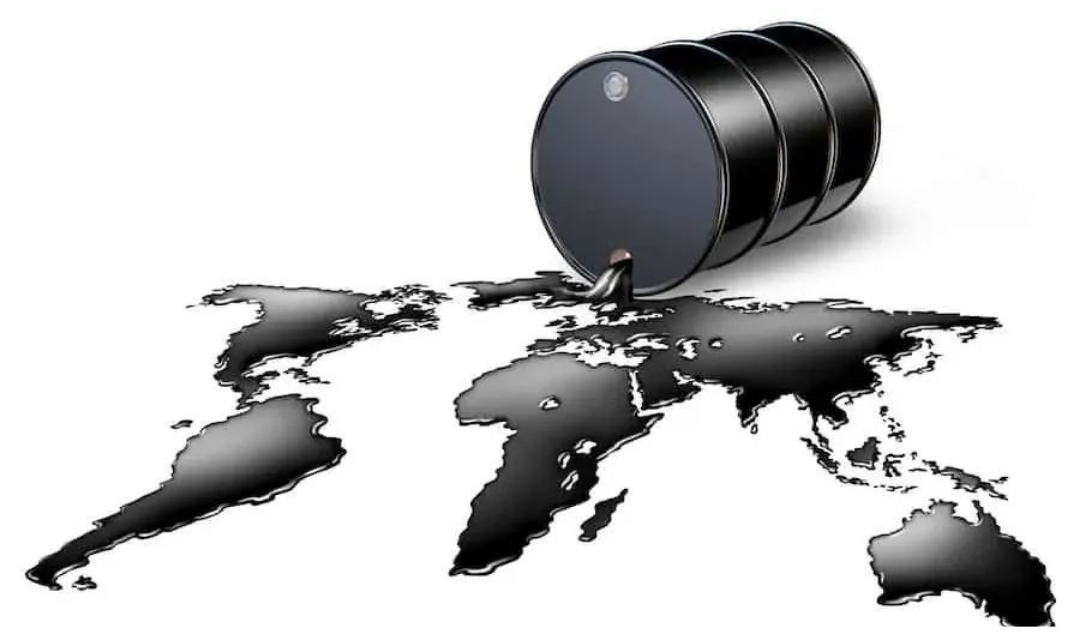So far, the price of Brent oil has climbed above $100 per barrel and the price of WTI (West Texas Intermediate) oil has hit new highs in recent decades. As a basic commodity, the sharp rise in crude oil prices has put enormous pressure on global inflation.

Former Fed chairman Ben Bernanke points out that the impact of rising oil prices on monetary policy depends on the initial state of the economy, and it is necessary to have strong and powerful monetary tightening measures if inflation is close to the upper limit of the tolerable range or there is a risk of further increases.
The current inflation is well above the target value, and the inflation in March was mainly driven by a sharp rise in energy prices. Under such circumstances, persistently high oil prices are likely to delay the arrival of inflation inflection points, and the Fed will also take the inflation brought about by high oil prices more seriously, or even tighten monetary policy further.
So will high oil prices eventually lead to high inflation and recession? This is not always the case from historical experience.
How the historically high oil prices have come down?
The three oil crises (years of 1974, 1981, and 1991) were mainly caused by the oil market turmoil and embargo sanctions that triggered by the outbreak of war, which led to the rise of oil prices. Against the backdrop of a huge economic blow, oil-producing countries and international energy agencies have taken countermeasures actively to play a regulatory role, which has finally eased the pressure on oil prices and stabilized oil supply.
In 2000, the internet bubble dragged the global economy into recession. In 1998, oversupply in the oil market caused oil prices to plummet below $10, thus, OPEC had to agree to cut production; On the other hand, after the Asian financial crisis, the global economy recovered, oil entered the peak demand season, and the imbalance in supply drove up oil prices. Then in 2000, the internet bubble burst and oil prices fell; the September 11 attacks hit demands again, and crude oil prices eventually fell to $16 per barrel at the end of the year.
In 2008, the all-time high oil price was brought to an end by the global financial crisis. After the internet bubble, U.S. real estate entered an upward cycle, the global economy also entered a period of prosperity, and oil prices ushered in the strongest bull market in the history, breaking through the all-time high of $146 before the financial crisis. Against the backdrop of the ongoing global financial crisis, the global economy fell into its first negative growth in nearly three decades, and oil prices fell sharply. In less than half a year, oil prices fell from an all-time high to $40 per barrel.

In 2014, the shale oil in the United States begins to be net exported. In 2012, the U.S. and the EU imposed comprehensive sanctions on Iran, and oil prices remained high until 2014; While in 2014, due to the low cost of shale oil extraction, the United States became a net crude oil exporter from a crude oil importer; Meanwhile, the crude oil production of non-OPEC oil producers has also increased steadily, making oil prices drop a level quickly.
In 2018, OPEC reached an agreement on production cuts again, at the same time, the United States announced economic sanctions against Iran, which raised concerns over the oil supply shortage, thus, oil prices rose again in the short term; In addition, the Federal Reserve started a tightening currency cycle, economic and trade frictions arose frequently between Sino-US, Europe and the United States. As a result, oil prices have never fallen. Finally, the oil producing countries announced an increase in oil production, making oil prices fall back to the $40-60 range again.

The high oil prices of this round are comparable to those of 2011-2014, both in a weak cycle of economic growth, and the high or low oil prices are mainly depended on the supply imbalances. The manufacturing PMI continued to slide in the early days of 2011, but after the shale oil production well sprayed, it began to rebound against the trend in 2012. Similarly, inflation was also high at first and low later. This round of high oil prices did not bring the economy into recession.
As history shows, fluctuations in oil prices are often the associated factors in periods of economic turmoil, and will eventually fall back to a reasonable range under the adjustment mechanism of both supply and demand in the market. This process may be long and painful, reflected in all the current markets, difficulties are only temporary, and the results will be brighter eventually.
Just as what Nietzsche once said, “That which doesn’t kill me makes me stronger”.
Articles & Video Sharing:
![]() VIP QUALIFICATIONS FOR SELF-EMPLOYED BORROWERS!!
VIP QUALIFICATIONS FOR SELF-EMPLOYED BORROWERS!!
![]() THE KEY POINT ON WVOE MORTGAGES
THE KEY POINT ON WVOE MORTGAGES
![]() No Income Loans, why so popular?
No Income Loans, why so popular?

Statement:
This article was edited and compiled by AAA LENDINGS, the copyright belongs to AAA LENDINGS website, it doesn't represent the position of this website, and is not allowed to be reprinted without permission.
阅读原文 阅读 741







